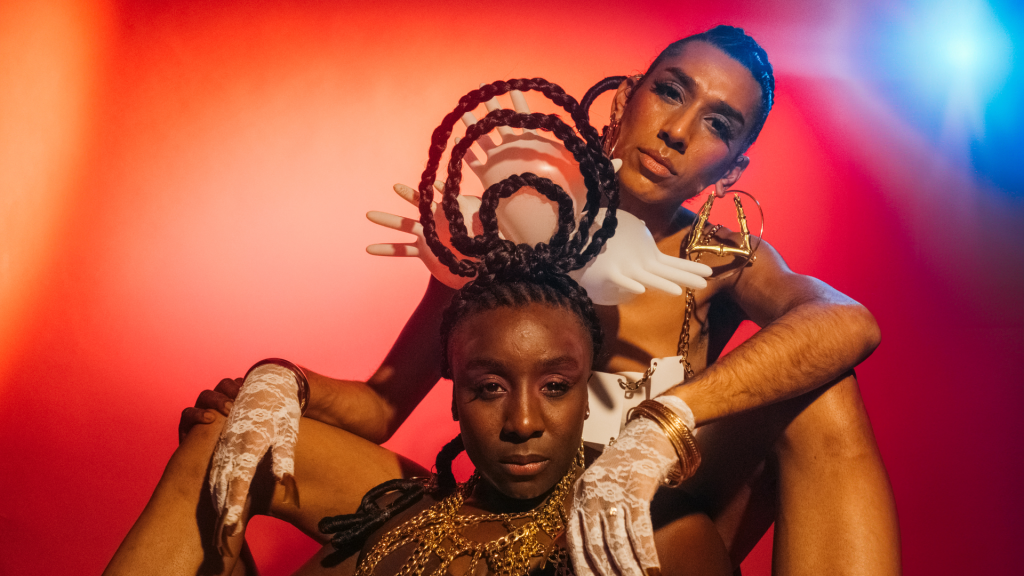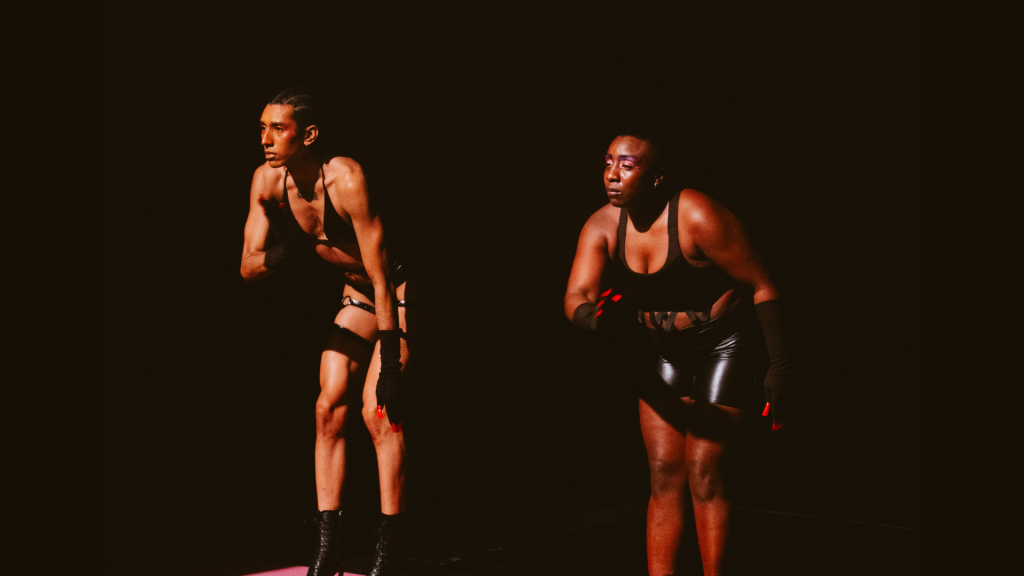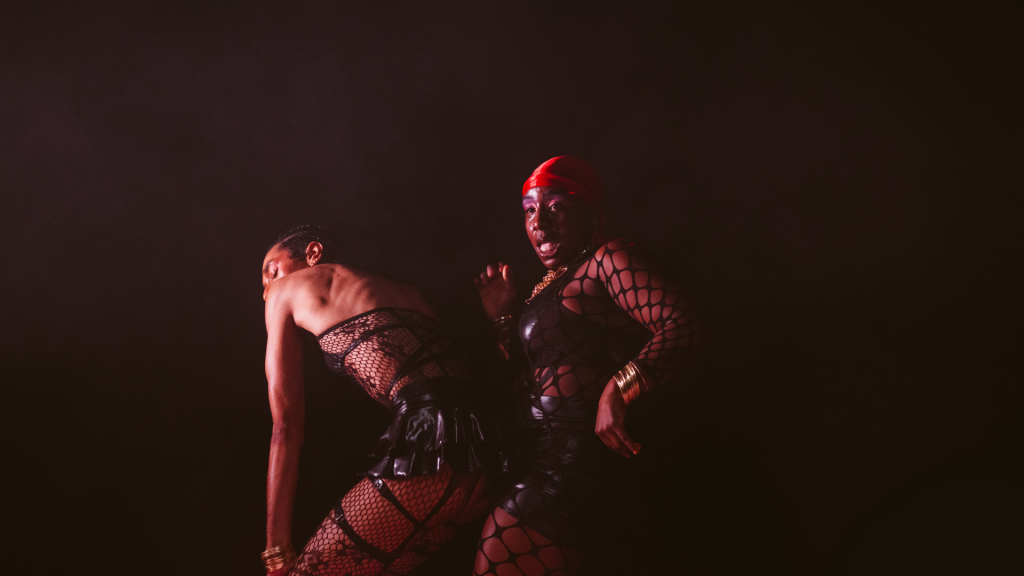Ray Young is a transdisciplinary performance artist, experience maker, and writer …
Widely recognised for their groundbreaking work at the forefront of activism, queerness, race, and neurodiversity.
Ray’s work has been presented widely across the UK, including in London, Cambridge, Brighton, Leeds, and Edinburgh, as well as internationally including Portland, Mexico City, and Venezuela. Their groundbreaking contributions to the field of performance art have earned them numerous awards and accolades, and their work continues to push boundaries and challenge conventional notions of what art can be and do.
We spoke to Ray about their award-winning duet OUT a reimagining, reclaiming and celebration of aspects of Caribbean culture from a queer perspective,
Please introduce yourself tell us who you are and what you do, and where you’re from?
I’m Ray Young and I’m a trans-disciplinary performance artist and writer. I’m from the Caribbean. Both of my parents are from the Caribbean, Saint Vincent and Jamaica via Nottingham.
Describe your life right now in a word or one sentence …
Slowly evolving…
Tell us about your latest project OUT?
OUT is a work that I first started thinking about in 2016. It grew out of conversations I was having with the queer community in Nottingham, and more specifically with a friend of mine called Dwayne Antony. We were talking about some of the frictions between our blackness and queerness. The work tries to carve out a joyful space where we can fully be ourselves, away from the doctrines that we may have grown up with and all the respectability politics that may have kept us from living authentically.
Why did you make the decision to re-run OUT?
It feels like the work resonates now more than ever. I’d like to think that we have moved on from using people’s sexuality or gender expression to question their humanity. However, you only have to watch the news or scroll through social media to realise that isn’t the case. There is so much harmful legislation coming up all over the world. So now feels like the perfect time to bring this work back.

What did you learn from the response to the first run of OUT and how did you apply those learnings to the reprised version?
When I first made OUT, I didn’t have any expectations for the work as it was a chance to experiment and an opportunity to see how we might share some of the aforementioned conversations into an experience that might relate to other people like us. I wanted to work in a different, more embodied way. From the first moment that we shared the work with an audience, we realised the power in it. The thing that’s struck me the most is how it’s resonated with black queer audiences. And that there aren’t many opportunities for us to be fully ourselves in this industry. Which was evident when we did the casting call to find new performers for this iteration. It was so beautiful to see everybody be their authentic selves in the space, it really felt like queer joy. Having new performers has been the most significant change. I’m directing and not in it this time around. So while parts of the piece have changed because the performers bring a different quality and experience to the work, structurally and at its core it’s remained the same.
As you navigate your creative journey how do OUT and your previous works BODIES, and THIRST TRAP tie together to shape the message you want to share with the world and your audiences?
All of these works are related in that they speak on social justice issues. OUT and Nightclubbing explore identity politics alongside social justice and racial justice. BODIES and THIRST TRAP are looking at climate justice which I don’t think you can achieve without tackling social justice. In OUT, we’re trying to strive for a place of black joy and in BODIES and THIRST TRAP as much as we’re trying to speak to climate justice, we’re also trying to find a space for rest and recuperation (it’s hard out here). We need our collective energy to go out there and fight for what’s right. All of these works are also about building community. Making work where people can come together feels really important right now and bringing people together is one of the main reasons why I create.
Your bio says – ‘you are a transdisciplinary performance artist, experience maker, and writer, widely recognised for their groundbreaking work at the forefront of activism, queerness, race, and neurodiversity. Their practice is centred around creating a safe space for those who exist at the intersection of multiple realities, through collaboration and resistance to traditional forms‘ – there’s a level of responsibility when it comes to the space you occupy – was this always your intention …?
Firstly, I’d like to amend my bio slightly as there are no safe spaces. Space of generosity is a phrase that perhaps better encapsulates what I’m trying to create. When I started making work, I was just trying to tell the stories or the lived experience that I didn’t see represented. At the time I was a jobbing actor, and I was trying to exist outside of the very limited roles that were there for me at that time and to tell our stories. Sometimes yes, that does feel like a huge responsibility. But there are lots of amazing black theatre makers, dance makers and live art makers, and together it’s a really exciting time to be creating work and putting it out there into the world.

The scary thing is sometimes when you do put work out there, especially where it centres black and brown people, it can get under the skin of people who don’t have that lived experience because they feel like they’re being excluded. When in actual fact, we’ve been excluded from the mainstream for such a long time and also deserve to take up space.
Please share the Highs, lows, solutions to getting OUT completed and how you resolved the obstacles.
The high point for me was the casting and being surrounded by black, queer, trans and non-binary performers. It felt really beautiful and joyful and accepting to be in that space which doesn’t happen every day. One of the challenges is making work in this climate now when you’re sitting with personal grief and collective grief. And making work in a climate where there’s lots of cuts to the art. The power of the work itself helps me overcome the obstacles as I know what it did for me in terms of how transformative it was to perform in a piece that allowed myself to be seen in a way that I hadn’t been before. As well as how it resonated with other black queer audience members that came to see it. I try to hold that with me all the way through the process as to why it’s worth pursuing and getting to the end.
A moment/scene in OUT that best captures why people should go and see it …
It’s hard to pick just one moment as I like how it all sits together as a composition. The performers in the work, Azara Meghie and Bambi Jordan Phillips are amazing, truly powerful and captivating artists which is also a reason to come and see the piece.

GETTING TO KNOW YOU
If not this, then what?
I think I would be a therapist.
What’s made you Sad, Mad, Glad this week?
The ongoing genocides in Gaza, Sudan and Congo have made me sad. The hate and vitriol towards LGBTQ+ communities has made me sad and mad. Getting to sing with my choir, the G.O.A. (Gang of Angels) has made me glad this week.
What are you watching right now?
I’ve been watching Atlanta.
What are you reading right now?
Memorial by Bryan Washington.
What are you listening to right now?
Beyonce’s Cowboy Carter.
The last thing you saw on stage?
The Making of Pinocchio at Battersea Arts Centre.
What’s on your bucket list?
I’m excited about being able to make new work.
Where’s your happy place?
At the moment my happy place is in the bath with some candles and lavender, rosemary and eucalyptus oil.
Celebrate someone else …
I rate my friend and choir director Honey Williams from G.O.A, who is also a brilliant visual artist. I also rate curator and producer Saziso Phiri, and Ioney Smallhorne who is a speculative fiction writer.
Celebrate yourself …
I feel proud that I’m still at it after this many years. I’m really pleased to be bringing OUT back to life and sharing the work at Sadler’s. I’m proud of the canon of things I’ve created over the years. When I look back at all the pieces, everything feels like it could only have been made by me, like it’s in the brand if I have one. I’m also proud of my perseverance and determination.
Whose footsteps are you following in?
Whenever anyone asks who I want to be my mentor I always say Solange. I like that she’s always stepping out and doing her own thing.
What’s Next?
I’m in the early stages of creating a new project and I can’t share too much at the moment but I’m excited!
Where can we find you?
You can find me on my website and on socials @rachaelraymck
Where can we see/read/listen to your latest work?
OUT ran at Sadler’s Wells’ Lilian Baylis Studio on 25th and 26th April, and will run at Home Live Art, Hastings on 7th June.
